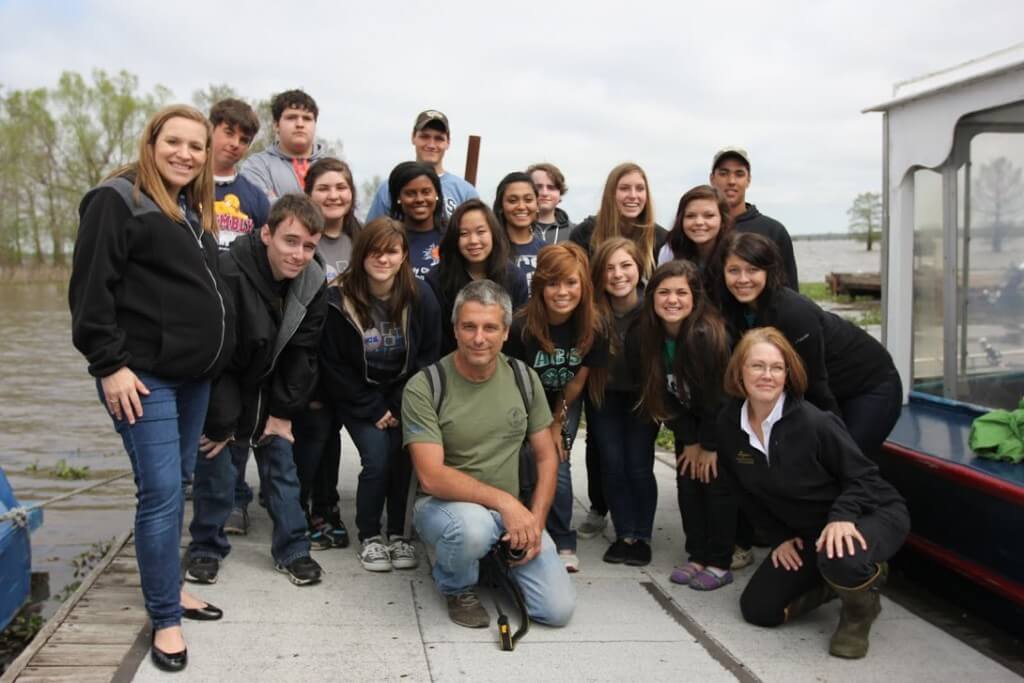Keys to Fundraising Success
Atchafalaya Basinkeeper was a successful organization, but so much of the group’s time was spent protecting their watershed that very little went into securing their budget from one year to the next. They relied almost entirely on grants, and had little time to dedicate to their members. Overall they weren’t getting the support that they needed to continue, let alone expand their work.

Dean Wilson (center), Atachafalaya Basinkeeper’s Executive Director, with a group of students releasing paddled fish they hatched in their classroom (c) Atachafalaya Basinkeeper
Atchafalaya Basinkeeper’s chief fundraiser, Cara Leverett, felt ill-prepared and fundraising efforts ended in a mere $3,500 (about 3.3% of their annual budget) in 2009. Atchafalaya Basinkeeper began working with River Network to address this concern.
Training was provided by River Network’s leadership development team from late summer through November of 2009 to develop a new fundraising plan. On weekly phone calls, River Network asked questions and gave the organization homework assignments that involved gathering information from the current donor database, which at that time was an Excel spreadsheet.
“Seemingly by magic, Diana (River Network’s Leadership Development Director) organized all of the information she had compiled into a complicated-looking Excel spreadsheet that held the key to our fundraising success. The spreadsheet was actually pretty simple—it had seven sections, each a different component of our fundraising plan. The seven pieces of our plan were major donors, member dues, board giving, events, private foundations, business donors and other NGOs,” says Cara.
Using the data that Atchafalaya Basinkeeper’s chief fundraiser had garnered from their existing database, River Network helped the group set target amounts for each category. For some sections of the plan, such as major donors, member dues and private foundations, they were very specific with sources and amounts. In other sections, such as events and business donors, they left things vague or set low estimates since we did not have as much data on which to base the figures. By early December, they had a draft fundraising plan to present to their Board of Directors.
The partnership led the Atchafalaya Basinkeeper down the path to increasing their individual and business donations from a mere $3,500 in 2009 to about $35,000 (about 33% of their budget) in 2010.
Atchafalya Basinkeeper’s lessons learned:
- The pay-off of a good fundraising plan is well worth the time and effort that goes into developing it.
- Individual donations are more reliable than foundation grants, if you can keep your members and sponsors engaged.
- Securing unrestricted funding is critical to success. Many foundations will not fund general expenses or certain aspects of your work.
- People want to give, you just have to ask!
River Network focused on cultivating the membership component in 2010, but also addressed the other areas of the organization’s fundraising plan. The following year, with the membership plan in place, they were able to dedicate time to creating a solid strategy for their major donor program.




